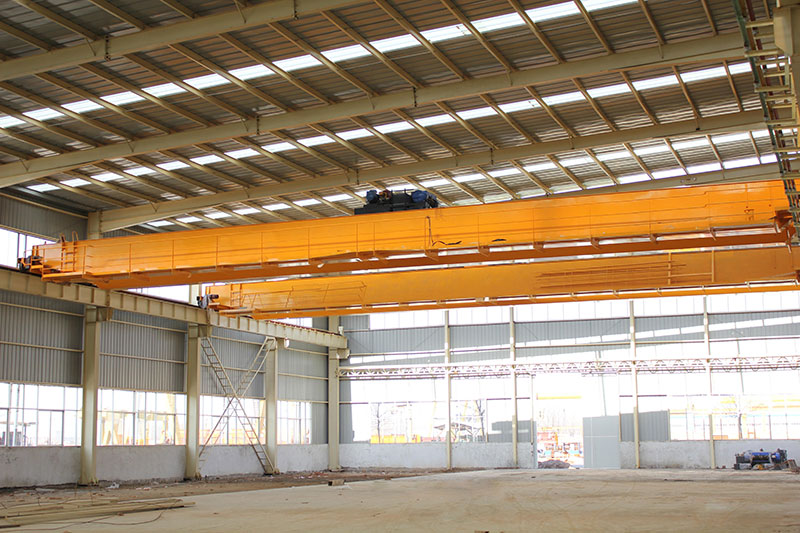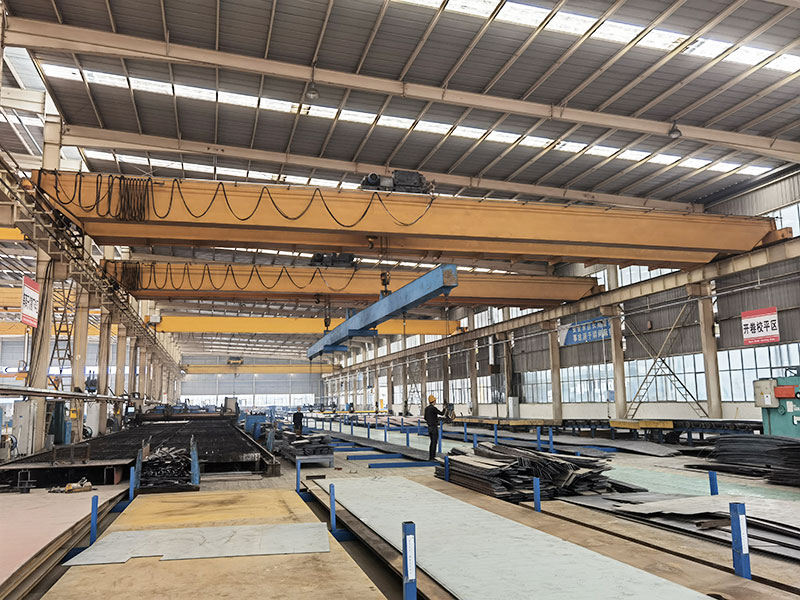Industrial and construction operations often require heavy lifting solutions that can handle substantial loads with precision and safety. A 50-ton overhead crane, with its impressive capacity, is a popular choice for these tasks. However, understanding the costs associated with acquiring and operating such a crane is crucial for informed decision-making. In this article, we’ll delve into what to expect when buying a 50-ton overhead crane, exploring both the initial investment and the ongoing expenses.

Initial Investment Factors
The initial cost of purchasing a 50-ton overhead crane is influenced by various factors that collectively determine its price tag. Here are some key considerations:
1. Crane Type and Configuration
The type and configuration of the overhead crane significantly impact its cost. Different crane types, such as single girder or double girder overhead cranes, come with varying price points. Additionally, specialized features like variable speed controls, automation capabilities, and safety enhancements can contribute to the overall cost.
2. Load Capacity and Span
The load capacity and span of the crane are critical factors. A 50-ton overhead crane is designed to handle heavy loads, but the span (the distance between the runway beams) also plays a role. Longer spans may require additional structural support and engineering, affecting the cost.
3. Manufacturing Material and Quality
The quality of materials used in manufacturing the crane and its components directly impacts its durability and longevity. High-quality materials may come at a higher upfront cost but can provide a better return on investment in the long run due to reduced maintenance and longer service life.
4. Brand and Manufacturer
Reputable brands and manufacturers often come with a premium price due to their established track record of producing reliable and high-performance equipment. While opting for a well-known brand can offer peace of mind, it’s essential to balance brand reputation with your budget.
5. Installation and Commissioning
The cost of installing and commissioning the overhead crane is an integral part of the overall investment. Factors like site preparation, crane assembly, electrical work, and testing contribute to these costs.

Ongoing Operating Expenses
Beyond the initial investment, there are ongoing operating expenses associated with owning a 50-ton overhead crane. Being aware of these expenses can help you plan for the crane’s long-term use effectively.
1. Maintenance and Repairs
Regular maintenance is essential to ensure the safe and efficient operation of the heavy duty overhead crane. This includes lubrication, inspection of components, and addressing wear and tear. Budgeting for routine maintenance helps prevent costly breakdowns and extends the crane’s lifespan.
2. Energy Costs
Operating a 50-ton overhead crane requires electricity to power its motors, lights, and control systems. Understanding the energy consumption of the crane and its associated costs can help you budget for operational expenses.
3. Operator Training
Proper training for crane operators is a crucial investment. Trained operators ensure safe and efficient crane operation, reducing the risk of accidents and minimizing wear and tear on the equipment.
4. Compliance and Safety
Compliance with safety regulations and standards is not only a legal requirement but also essential for the well-being of workers and the longevity of the crane. Costs associated with safety inspections, certifications, and upgrades to meet changing regulations should be factored into your budget.
5. Replacement Parts
Over time, certain components of the crane may need replacement due to wear and tear. Budgeting for replacement parts and having a spare parts inventory can prevent unexpected downtime and production delays.
6. Downtime Costs
Downtime can be a significant expense, as it can halt production and disrupt operations. Having contingency plans in place, as well as a maintenance schedule, can help mitigate these costs.
Choosing Wisely for Long-Term Value
While the initial investment and ongoing expenses may seem daunting, it’s essential to view the purchase of a 50-ton overhead crane as a long-term investment in your business’s efficiency and productivity. Prioritize value over the lowest cost, considering factors like durability, safety features, and manufacturer reputation. Collaborating with experts in the field can help you make informed decisions that align with your operational needs and budget constraints.
In conclusion, navigating a 50-ton overhead crane price requires a comprehensive understanding of both the upfront investment and the ongoing operating expenses. By factoring in considerations such as crane type, load capacity, maintenance, and safety, you can make a well-informed decision that supports your business goals and ensures a safe and productive work environment.